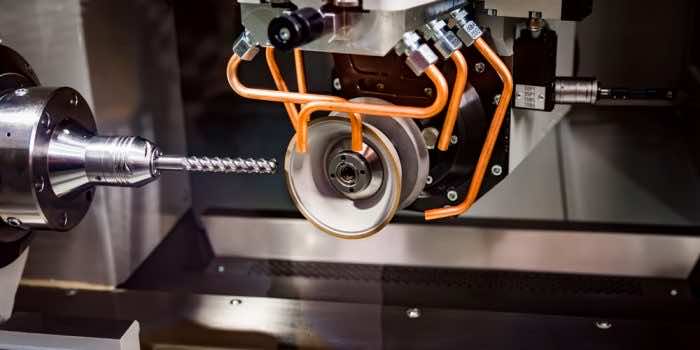Titanium and its alloys are now important staples for several applications in today’s manufacturing space. The aerospace, automotive, military, and medical industries have found a great use for this metal.
Titanium is rust and chemical resistant and has incredible strength for its weight. This is why it is popular for several applications. However, titanium comes with some challenges that come with the precision CNC machining of titanium.
In this post, we will discuss why titanium is hard to machine and give you essential tips for machining titanium.
Application of Titanium in the Aerospace Industry
Demand for products in the aerospace industry continues to rise. Material selection is always a critical aspect when it comes to designing for aerospace applications. For example, lightweight and component reduction are vital for parts leaving the earth. This helps to reduce the amount of fuel used by incredible ounces.
The lightweight nature of titanium makes it suitable for aerospace applications. Despite being lightweight, titanium offers very high strength and temperature resistance. This further increases its popularity in the industry. Precision CNC machining of titanium helps to produce parts such as:
- Compression blades, rings, and discs for jet engines;
- Helicopter hubs;
- Rocket engine cases;
- Airframe and space capsule components.
Is Titanium Really That Hard to Machine?
The short answer is yes, it is hard to machine titanium. In fact, most manufacturers regard machining titanium as the pinnacle of manufacturing capabilities. The common titanium alloy (grade 5) used in machining is the actual hard metal, while the pure titanium is somewhat soft.
So, when you work with titanium, you deal with the challenges of soft metals and harder materials. The following are reasons why titanium is hard to machine:
- Titanium Chips Are Flammable
Titanium chips can easily burn at high temperatures of about 600?. This physical phenomenon further increases the difficulty in machining titanium. Given the poor thermal conductivity of its alloy, higher temperatures are required for cutting.
The high temperatures create cracks and chip tumors. The cutting edge appears worn very rapidly, destroying the surface integrity of the titanium parts. Some temperatures may burn away parts of the material and reduce the geometric accuracy of components.
- Chemical Affinity
Titanium has a property of serious adhesion to materials containing its alloys. This chemical affinity makes the machining of titanium hard. Many of the tools used in CNC precision machining have coatings that contain titanium. Thus, the tools adhere to the surface of the titanium chip, making it hard to carry out further processing.
- Poor Thermal Conductivity
Most of the titanium alloys have very low thermal conductivities. Their thermal conductivities are only about 1/16 of aluminum and 1/7 of steel. This causes the gathering of heat in the cutting area.
That is, the heat you generated when cutting titanium alloys does not get transferred to the workpiece. The heat is also not taken away by the chips. For this reason, titanium requires a very high temperature to cut. However, this may damage or shorten the service life of the product.
Tips for Cutting Titanium
When you combine a well-planned process with a proficient understanding of setups for titanium, you can take advantage of its incredible properties.
Here are some tips to keep in mind for the effective machining of titanium:
- Cutting Tool and Material Selection
Cutting titanium requires extreme cutting forces. Therefore, you should only machine this metal on rigid equipment. For example, the machine spindle should offer good surface contact at the face and the taper. This ensures the security of numerous contact points with the spindle.
Also, a dense machine construction ensures vibration absorption and takes cutting loads. Therefore, do not use construction for light-duty machining. High-performance machining tools that do not react with titanium will be your best bet. Uncoated, fine-grained carbide is a great option. Furthermore, it would be best to choose a positive geometry with improved edge toughness.
- Tool Cutting Conditions
The right tool cutting conditions play a big part in the precision CNC machining of titanium. Titanium has the tendency to pull out end mills under heavy loads. In this case, using shrink fit holders will be a good fix. Also, a Safe-Lock or similar system will help keep tool holders in accurate and tight positions.
Hydraulic holders use new technologies to prevent the pullout. Trochoidal milling paths often lessen the shock to the tools used. You can use plunge milling to rough out some deep cavities.
- Use of Coolant
The stringy chips and high temperatures associated with cutting titanium require a good flow of clean cutting fluid. It will be best to increase coolant concentration over 10% for critical operations like this. Filtration to 25 microns is often very effective. You may also install high-pressure pumps to blast the stringy chips away from the work area.
- Choice of Feed Rate
The machinability range of titanium is narrow. The cutting speed recommended for roughing is 60 m/min, while it can be four times more for finishing. The feed rate should be high enough when machining titanium to prevent work hardening. Do not deviate from titanium’s comfort zone when it comes to feed rate and cutting speed. Choose a lower cutting speed and higher feed rate.
- Proper Heat Treatment Before Cutting
Titanium has poor thermal conductivity, which impacts machining operations. This may wreak havoc on your cutting tool. Pushing heat onto the titanium chip will be a great way to start. Proper treatment of the titanium introduces some heat to it before cutting. So, you can be sure of much easier cutting and improved tool life.
Conclusion
Titanium is an expensive material. Employing the best practices when cutting this metal will help you prevent waste and unnecessary expenses. The tips provided in this post will help you machine titanium more effectively.
RapidDirect’s professional prototype CNC machining helps to optimize your titanium machined parts.


